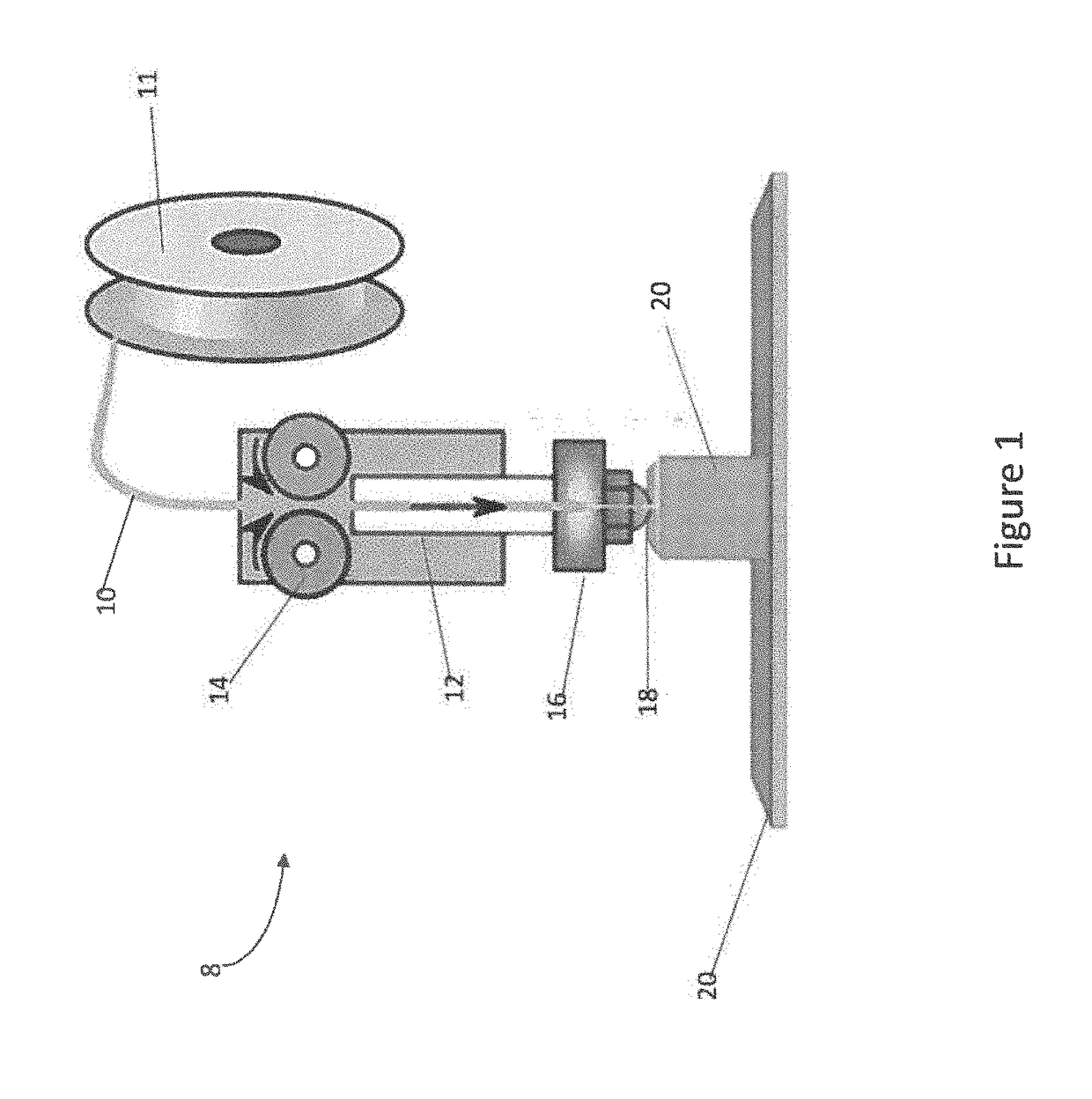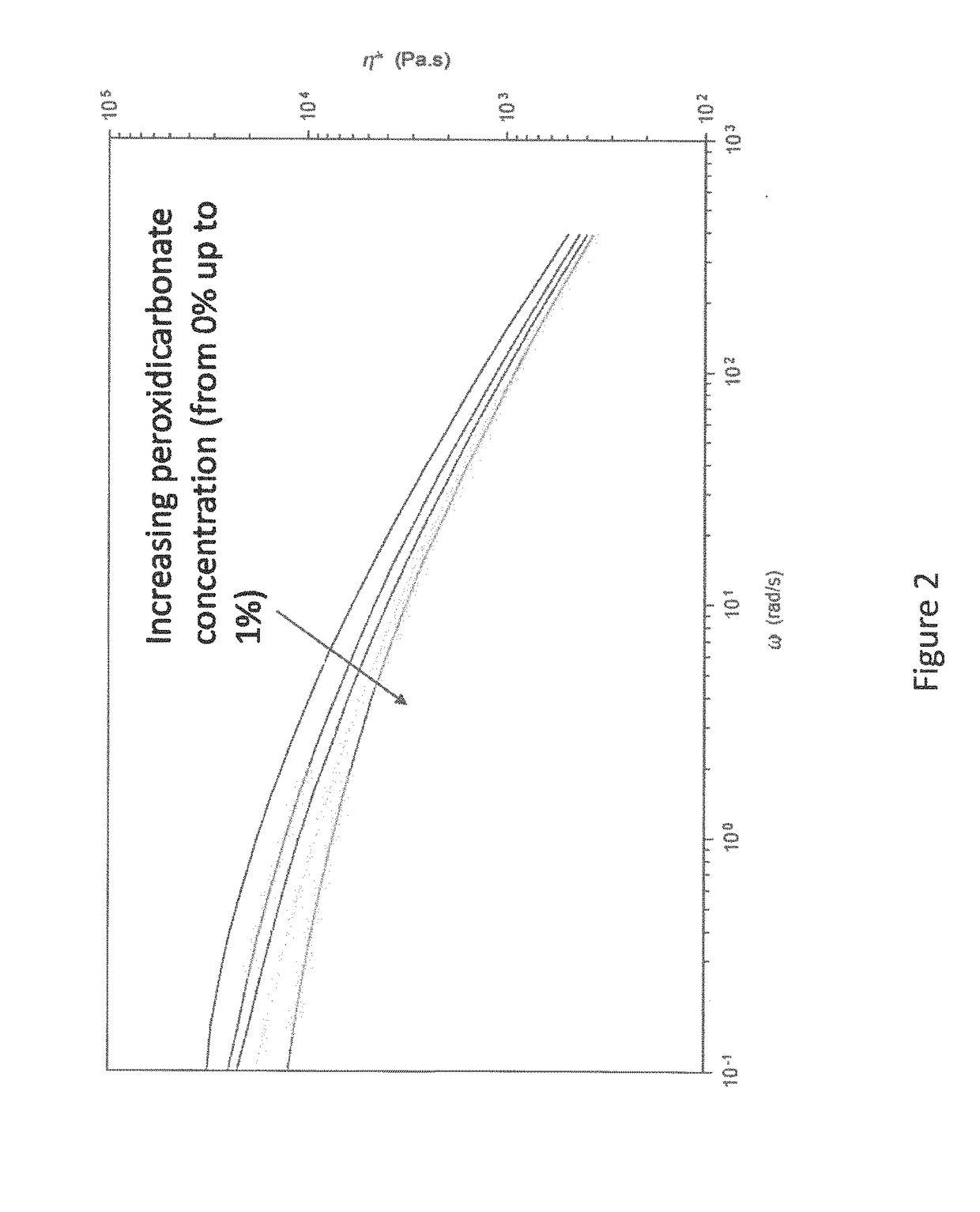Polypropylene for additive manufacturing (3d printing)
- Summary
- Abstract
- Description
- Claims
- Application Information
AI Technical Summary
Benefits of technology
Problems solved by technology
Method used
Image
Examples
Embodiment Construction
[0025]Fused Filament Fabrication (FFF) and Arburg Plastic Freeforming (APF), as noted above, are methods of rapid prototyping. The process works by laying down consecutive layers of material at high temperatures, allowing the adjacent layers to cool and bond together before the next layer is deposited.
[0026]Referring to FIG. 1, during the Fused Filament Fabrication process, a filament 10 may be fed from a spool 11 to an extruder 12. The extruder may use torque and a pinch system 14 to feed and retract the filament as needed. A heater block 16 melts the filament at an appropriate temperature, and the heated filament is forced out of the heated nozzle 18, laying down the extruded material 20 where it is needed. The print head 8 and / or the bed 20 may be moved to the correct X / Y / Z position for placing the material as the printing process proceeds.
[0027]While described with respect to a particular type of Fused Filament Fabrication process and illustrating a single spool, those of skill ...
PUM
| Property | Measurement | Unit |
|---|---|---|
| Temperature | aaaaa | aaaaa |
| Fraction | aaaaa | aaaaa |
| Dynamic viscosity | aaaaa | aaaaa |
Abstract
Description
Claims
Application Information
 Login to View More
Login to View More - R&D
- Intellectual Property
- Life Sciences
- Materials
- Tech Scout
- Unparalleled Data Quality
- Higher Quality Content
- 60% Fewer Hallucinations
Browse by: Latest US Patents, China's latest patents, Technical Efficacy Thesaurus, Application Domain, Technology Topic, Popular Technical Reports.
© 2025 PatSnap. All rights reserved.Legal|Privacy policy|Modern Slavery Act Transparency Statement|Sitemap|About US| Contact US: help@patsnap.com



